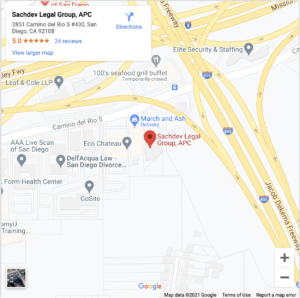Puja Sachdev | March 31, 2021 | Child Support
Even though parents may not be married or live in the same household as their children, they are expected to support their children financially. California child support laws state that both parents have a duty to support their children. The support is subject to child support laws and child support guidelines.
In many cases, child support payments are the result of a divorce or paternity action. However, a parent may petition for child support payments even if the parents have never resided together. The parents’ relationship with each other has no bearing on the legal duty to support a child financially.
Will California Judges Order Retroactive Child Support Payments?
There are some cases in which child support has not been paid since the child was born. There are many reasons why a parent may not have received child support payments from the other parent.
A temporary order for child support was not issued at the beginning of a child custody or divorce case. A parent filed a petition with the court seeking support payments. The other parent disappeared, and the petitioning parent just discovered the location of the parent.
Regardless of why the parent has not been receiving child support, there is a limit on the term for retroactive child support. The judge will only grant retroactive child support for the past three years. Furthermore, the retroactive child support payments may only cover a period from the filing of the petition to the current date.
How Do California Courts Calculate Retroactive Child Support Payments?
The court uses the California child support guidelines to determine how much child support would have been owed during the retroactive period. However, several factors could change the amount of the payments during the retroactive period.
First, the parents’ incomes during the retroactive period are used for retroactive support payments. Current income is not used to calculate retroactive support payments. If the parents’ incomes are different now, the amount of ongoing child support may differ.
Additionally, a judge may consider voluntary payments made by the noncustodial parent during the retroactive period.
When calculating the amount of retroactive child support, a judge might consider:
- Payments made directly to the custodial parent
- Paying daycare or after school care
- Paying a child’s school tuition payments
- Additional money that the noncustodial parent gave to the custodial parent to help with the child’s expenses
The noncustodial parent has the burden of proof for any payments made during the retroactive period.
Calculating Ongoing Child Support Payments in California
California uses uniform child support guidelines to calculate ongoing child support payments. The guidelines apply to all cases filed in California. Judges use the formula in the guidelines to calculate support payments.
The formula uses each parent’s time with a child and each parent’s income to determine child support obligations. In most cases, the custodial parent receives child support payments from the noncustodial parent. The formula was designed to ensure that each parent bears their share of the child’s financial support.
However, a judge may consider numerous factors in a child support case.
Factors that the court might consider include:
- The earning capacity of each parent
- The number of children the parents share
- The number of children the parents have with other people
- Childcare or daycare expenses
- The health care costs and health insurance premiums for the child
- Any expenses required for the child’s special needs
The judge may deviate from the guidelines, but the judge must include the reasons for deviating from the child support guidelines in the order.
Parents may enter a voluntary agreement for child support payments. Some parents choose to increase their child support payments because they want their child to participate in a specific school function or extra-curricular activity. However, the judge has the final determination of whether the agreement is in the child’s best interest.
Effects of Child Support Modifications and Retroactive Child Support
The court may modify the amount of ongoing child support for numerous reasons. A parent may become disabled and experience a substantial decrease in income. The noncustodial parent may receive a promotion that includes a substantial increase in income.
The reason for modification of child support payments must meet the substantial change in circumstances threshold to modify payments.
However, the court will not order retroactive child support when it modifies child support payments. The modification applies to ongoing child support obligations. Neither parent is given credit or a lump sum retroactively when the court modifies a previous child support order.
Child support cases, including retroactive child support, can be complicated. Parents may want to seek legal counsel to ensure they pay or receive a fair amount for child support.
For more information, call our law firm at (619) 866-3756 or reach out to us via email by visiting our contact us page.
